Want OUR updates SENT DIRECTLY TO YOU?
Sign up to receive e-mail updates
|
|
|
Each year we like to reflect on our best moments and biggest wins. Here's a "Best of 2023" list in no particular order.
WE WENT OUTSIDE
We spent time outdoors with family and friends! Fishing, hiking, biking, camping, kayaking, hunting, exploring... These are our absolute favourite memories each year.
WE HELPED CREATE ACCESSIBLE FISHING OPPORTUNITIES IN OUR COMMUNITY
We invested $15,000 of our Blindman Brewing Five of Diamond Pilsner royalties towards the new wheelchair-accessible dock at the Len Thompson Fishing Pond in Lacombe. This amazing project was spearheaded by the Lacombe Fish & Game Association.
OUR TEAM MADE SOME COOL NEW STUFF
Our quality team made HUGE improvements to our glow formula and we launched the Ultra Glow series which hit store shelves across Canada in the Spring. So far our retailers AND anglers are loving the new product!
JESS LAUNCHED A NEW CHILDREN'S BOOK
In The Outside Book, readers will meet a character named The Outside who is here to show you how being outdoors is good for your body, mind and heart. The best part? The Outside has something for everyone. Learn more.
WE ROCKED OUT TO NEW MUSIC
We discovered this track by The Runs. We had nothing to do with its creation but definitely had it on repeat for a few weeks!
WE CELEBRATED!
Our parents celebrated two big birthdays... Dad turned 70 and Mom turned 65!
WE WRAPPED UP FISHING FOR FOOD BANKS
We made the final donation of the Fishing for Food Banks campaign. Over three years, we launched 18 limited edition patterns and raised a total of $54,094. Learn more.
WE GREW THE PODCAST
We grew AND re-branded our Podcast! The "Canadian Fishing Podcast" is available on Spotify, Apple Podcasts and on our website. The Podcast is where we release the most content so please do us a favour and check it out? FYI - Episode 23 - Fishing Therapy with Christine Lapeer was one of our favs. Learn more...
On behalf of our family and our team (pictured below - August 2023), THANK YOU for supporting our Canadian family business. Happy New Year and here's to 2024!
0 Comments
My name is Green Eggs and Ham. I’m a goat. I’m also an assistant fishing guide. I work with my human, Graham from Chillbilly Sport Fishing Charters. We drift the Columbia River in Castlegar BC eating potato chips and searching for big rainbows and walleye. When we’re fishing for the big rainbows our go-to lures are the Len Thompson Dimpled Series. Flame and White Xtra Heavy (XFW) and Red and White Xtra Heavy (XRW) are very effective lures in the big waters and heavy currents of the Columbia. Graham likes to fish fast shallow runs by retrieving the lure along a nice seam in the water, or the big deep Eddies (an Eddy is a circular current of water) along a nice foam line. We recommend using a really good quality ball-bearing swivel in the river as the current can spin your line causing casting issues. Another piece of advice? If you’re not catching anything in the river, cast where you don’t think the fish are, they’ll surprise you sometimes. Tight Lines!
When ice fishing, first ice and last ice are typically what every angler looks forward to. This is where fish are plentiful and seemingly eat whatever presentation is offered to them. When mid winter ice fishing rolls around, things slow down, fish don't seem to bite anything placed in front of them, and your catch rates go down.
What if a few subtle changes to your tactics could make you more successful, all winter long?! A lot of factors need to be taken into account when heading out for a successful mid winter ice fishing trip. SEARCH FOR STRUCTURE First and last ice offers a short window with wonderful weather, where sitting out on the ice all day can be rather pleasant. With freezing temps, swirling wind, and blowing snow, most anglers set up shop during the mid season. Whether it be in a shanty, a portable shelter, or you are fishing outside in the elements, you usually don't feel like moving around too much. Most of the time, neither do the fish. They will be held up to structure off the main lake basin such as drop offs, steep points, reefs, and humps. As winter drags on and the ice gets thicker and snow piles up on the surface, there is less and less light penetration, and shallow weed beds die off, forcing pan fish (such as Yellow Perch) from the safety of their cover to structure where they can elude predators. These predators (such as Northern Pike and Walleye), can be found cruising along the edge of these drop offs looking for an easy meal. If you are willing to take a little extra time before setting up to put yourself on top of some mid lake structure (such as a reef) and fish from shallow to deep, you will more than likely be rewarded. Another option is to head out to the lake in the summer and map or mark out these locations ahead of time to save the hassle in the winter.​
TWILIGHT, DAWN, AND DUSK
It is also very relevant to consider the total hours of daylight during the shortest days of winter, and maybe even to consider how much darkness there is. A lot of species will continue to feed right through the dead of night, and the short span of time known as twilight at both dawn and dusk can be extremely productive for all species. Understanding the three recognized types of Twilight (Astronomical, Nautical, and Civil), at both morning (dawn) and night (dusk), as well as how their respective angles are affected directly by the time of year and latitude of the lake you will be fishing can be a huge benefit to your success. It may seem like a lot to understand, but with a little bit of research, it is a game changer. As a lot of species use low light conditions to ambush their prey, and this can be a very advantageous time to ice fish. Walleye for example are considered "phototactic negative", which means that they prefer low light conditions, compared to most fish which would be "positively phototactic". They are awarded this incredible sense due to the "tapetum lucidum" which is what gives their eyes the distinctive glow they are known for, which most people can compare to the eye of a feline. With this incredible advantage, Walleye are able to seek out prey best during low light conditions. This means that if you are willing and able to fish during the peak twilight hours, or even throughout the night, you will most likely be rewarded with some great fishing. Changing up your tactics to include glow or rattle baits, as well as scent, such as bait or attractant will improve your low light hours on the ice, and put more fish in your future! BIGGER ISN'T ALWAYS BETTER Quite often anglers believe that big lures catch big fish. This may be true for a small portion of the year, but typically not during the months where the lakes are frozen. With colder water temperatures, less light, and less cover, fish will be much more opportunistic about their meals and pick up small snacks more readily than chasing down a big meal. Collecting energy vs expending it is a huge winter consideration for all species under the ice. If your usual presentations are not garnering any interest, or fish are coming to take a look and then turning away, downsize your lure and bait of choice. This may mean that the herring on a quickstrike rig under a tip up may need to be swapped out for a minnow and small single treble, or the 3 inch jigging spoon you are reefing through the water column needs to be given up for a 1 inch flutter spoon and a little more finesse. More often than not, when I have downsized my presentation to picky fish, my success rates increase, and the overall size of fish increases as well. It's like offering a child a piece of candy or dessert versus another cheeseburger after they just finished their Happy Meal. Fish are going to grab that little candy, every single time.
COAT OF MANY COLOURS
Take a look through most anglers (including my own) tackle boxes, or gaze at the shelves of any tackle shop and all of the colour options available to us, and it can be overwhelming. But what do all of these colours really mean to fish? Can they see them? What about UV colours? How does colour choice affect your success? First and foremost, yes, it is believed that fish can see colour including ultraviolet (UV). Humans can not see the UV spectrum, but we can see that UV colours pop a little more than your standard paint job. Each species sees different colours through different ranges, and without going into too much detail, it can make a difference. Personally, what colours a fish can see is less important to me in the dead of winter than how a fish can see them. As discussed earlier, there is far less light penetration and overall daylight when the ice is thick and covered with snow. Taking that into account, as well as the wavelengths of the five primary colours from shortest to longest (red, orange, yellow, green, blue), it can be assumed that many colours disappear quickly beneath the ice. Blue stretches into the depths the farthest (or when light is low, such as under the ice) and should be a common theme among the tackle that you choose. Chrome, gold, bronze, and silver lures that are able to reflect light and flash or attract fish from a distance may be more important than colour itself. As brought up when fishing under low light conditions, glow is also a huge advantage when it comes to colour choice. By bringing light to the fish, they are able to see your offering more readily, and are more likely to take a swing at your presentation. If you are fishing shallower water, red, orange, and yellow may be visible during the peak hours of the day, but consider swapping to greens and blues or glow patterns as light fades to increase interest of fish in the area. WILLING TO CHANGE If you are willing to adapt your current practices and adopt some of the techniques or knowledge outlined above, I believe that you will have a more successful mid winter ice fishing season. Until that dreamy time known as "last ice" when the days are longer, sun is warmer, and the promise of open water is around the corner, I wish you good luck, and happy fishing!
Len Thompson, a returned WWI veteran, believed in the benefits of being outside. In fact, his doctor prescribed it. In papers dated 1956, Len wrote; "It is fortunate for me that I lived within a few miles of Katepwa Lake, where fishing was always good. In my Boyhood days we fished as often as we could get to the lake with horses, but didn’t take it seriously until after the First World War. During that scrap I collected a variety of wounds, gas, and malaria that left me in poor shape. Doctors’ orders were to keep in the open as much as possible so I wasn’t loath to spend a lot of time travelling the shores of the lakes in the famed Qu’Appelle chain, just fishing and forgetting."
These days, significant research has gone into the topic of mental health.
According to an article researched by the Canadian Mental Health Association, "It has been proven that being in green spaces (like forests, gardens and parks) can significantly reduce cortisol (stress hormone), and raise endorphin levels and dopamine production (both of which may promote “happiness”)... In other words, getting outside and being in nature are a winning combination for your psychological and physical well-being." (Source: CMHA.ca) In 2022, Angling Direct (UK) partnered with Anglia Ruskin University and the charity, Tackling Minds, to conduct an online study on fishing and mental health "The survey found that those who go fishing are less likely to self-harm, attempt suicide or report anxiety." (Source: Angling International). There's no arguing that being outside is good for you. Time to go fishing...
This was going to be a fishing blog but ultimately turned into a mental health blog
Written by Al Benoit, Len Thompson & Northern King Brand Ambassador
I truly believe that fishing, hunting and the outdoors was part of the solution. My love for fishing was second to none. When I did not want to do that, there was a problem. In the beginning, my friends dragged me out fishing and my family pushed me out the door. I began to realize getting back to my roots was the key but I had to return slowly. It was like starting a workout regime. One day out and I was exhausted. Slowly but surely I was able to regain that strength to the point I am now competing in fishing tournaments again, fishing multiple days and loving life. I’m still not fishing as much as I would like but it is a progression and I'm hoping this year will be another step forward.
The complications of PTSD rear their ugly head now and again but I use the tools I have learned to combat the issues when they arise… one of those tools includes a Len Thompson 5 of diamonds and a day on the lake. Mental health issues can happen to anyone at any time so please take it seriously, respect others having issues and to take care of your own mental health. Hope to see you on the water.
Guiding, Making Memories & Mental Health
On Episode 5 of the Made for Memories Podcast, Brad & Jess chat with Adam Gamble (Adam’s Angling Adventures). Adam talks about his career as a firefighter, the adventure of opening his guiding business and dives into the important conversation of mental health and the healing aspect of angling and disconnecting in the great outdoors. Listen on Apple Podcasts, Spotify or in the player below.
Canadian Mental Health Resources
If you're in immediate danger, call 911.
If you or someone you know is thinking about suicide, call Talk Suicide Canada at 1-833-456-4566. Support is available 24 hours a day, 7 days a week. For residents of Quebec, call 1-866-277-3553.
The Government of Canada
A list of Canadian mental health resources including support targeted towards Youth as well as First Nations, Inuit, and Métis Peoples. Learn more: canada.ca The Canadian Mental Health Association With 330 community locations, CMHA is a nationwide organization that promotes mental health and supports people recovering from mental illness. Learn more: https://cmha.ca/ Wounded Warriors Provides a range of clinically facilitated programs specifically developed to support the unique needs of Veterans, First Responders and their families. Learn more: https://woundedwarriors.ca/ Buddy Up In Canada, men have a suicide rate three times higher than women. This i=men’s suicide prevention campaign is a call to action for men, by men, to drive authentic conversation. Learn more: www.buddyup.ca/learn/ Last year, we put together “The Best of 2020” to look back at a few of the great things that happened in 2020 (despite the turmoil). We wanted to take a moment to appreciate a few of the positives in 2021. It was a quiet year on the public eye front, but very busy in the factory. Here are 10 cool things that happened in the Len Thompson world last year... 1. We grew our team and keep pumping out your favourite Canadian made lures each day. We now employ 33 staff at our factory in Lacombe, Alberta, Canada. Check out this special moment when we hit over 100,000 lures made in the month of April. 2. Fishing for Food Banks launched for a second year with a new set of limited edition patterns. We raised $16,840 and supported 35 communities across Canada. Learn more. 3. We landed in the Guinness BOOK of World Records for 2022! Does that make it extra official? We had no idea the World's Largest Fishing Lure was being featured until after the book was published. It was an awesome surprise! If you come across a copy, flip to page 99. 4. Speaking of the World's Largest Fishing Lure, Leroy & Leroy visited Lacombe and their video got over one MILLION views on TikTok.* *We are still not on TikTok. Do you think we should be?
5. Jess caught her first Laker (on a Northern King). A special thank you to Scott Bulat for the adventure on Cold Lake, Alberta. 6. We helped stock ponds in partnership with Blindman Brewing. 7. Speaking of ponds… the Lacombe Fish & Game Association's Kids Can Catch Day was a success! This event, hosted at the Len Thompson Pond in Lacombe, is our favourite family activity each year. It had been cancelled in 2020 so it felt extra amazing seeing so many people out stocking fish with the help of Smoky Trout Farm. 8. We created special edition Silver Salmon Challenge Lures which helped raise $2000 for the Metro East Anglers. The MEA operates the Ringwood Fish Culture Station where the main focus is the rearing and marking of the entire Ontario production of Chinook Salmon for Lake Ontario. 9. Ellie (5 years old) caught her first fish! This may have been the most exciting news of the year... Brad and Rachel’s daughter Ellie spent many hours exploring local trout ponds this summer with her Dad. She landed her very first solo catch in the Spring. She doesn't look happy about it at all. 10. We finally got an updated Pallister family photo. Thank you for supporting our 4th generation family business.
|
SOCIAL MEDIA
Categories
All
|


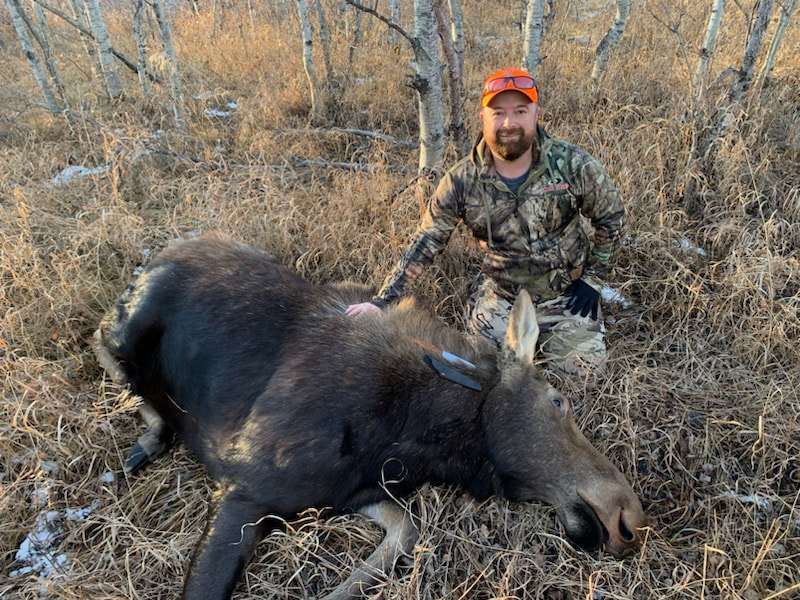
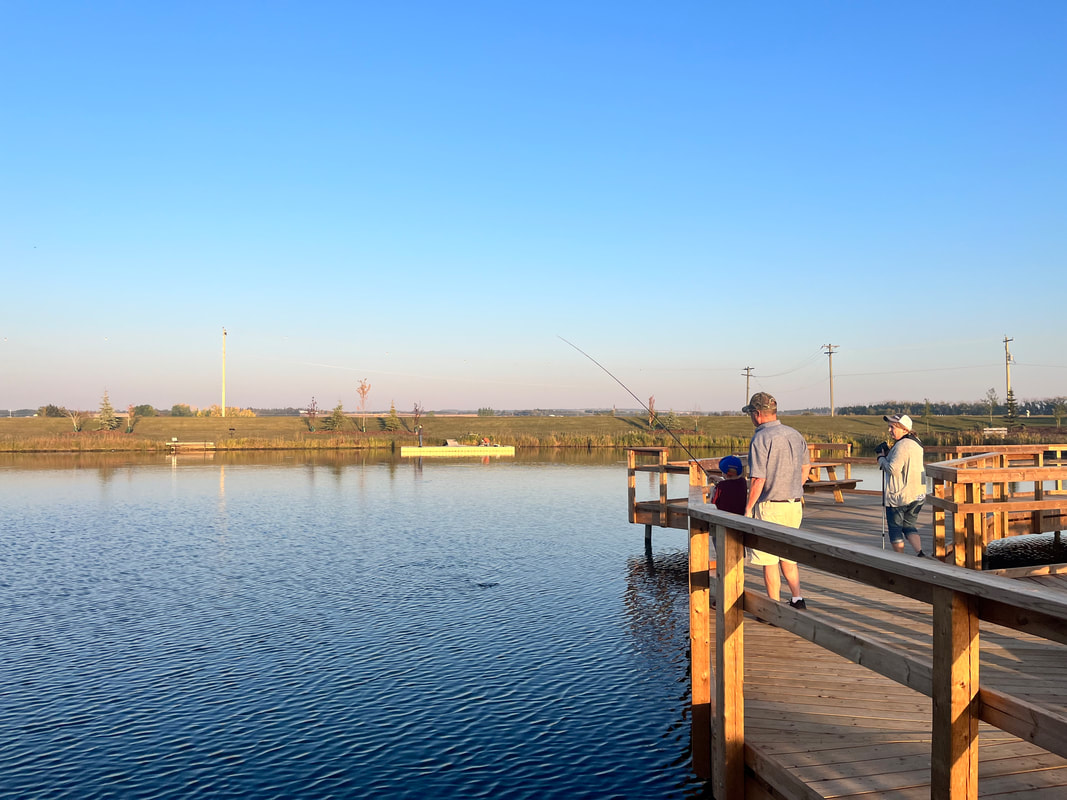
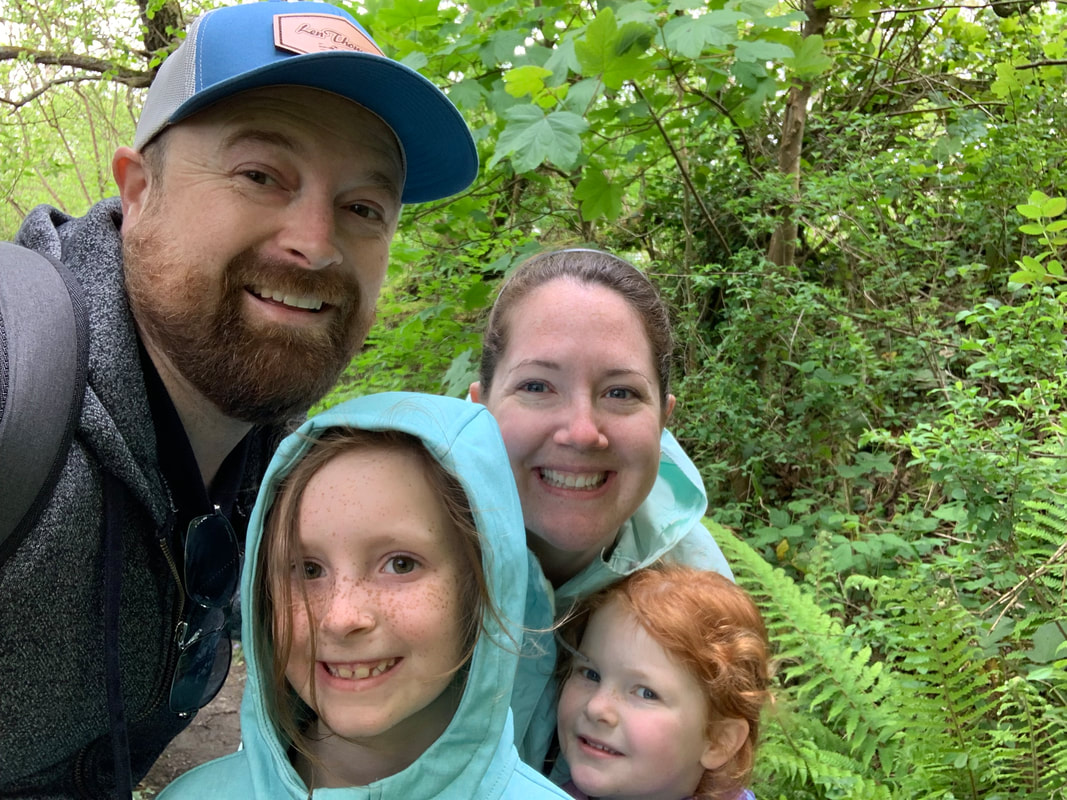
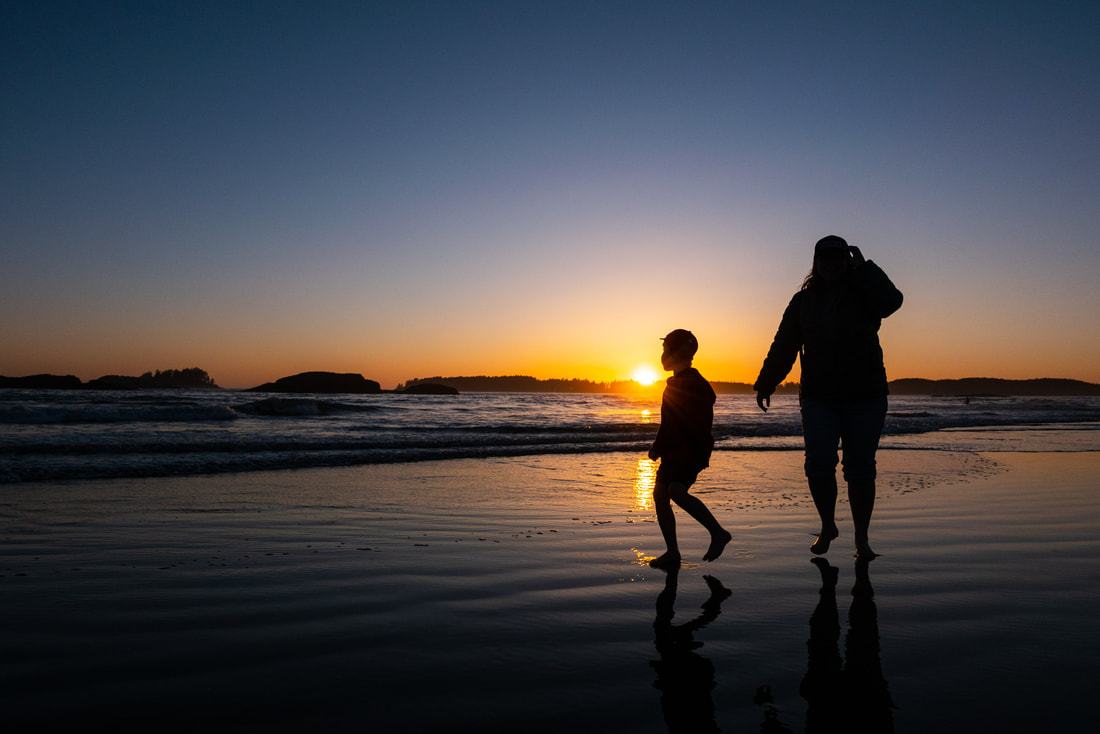
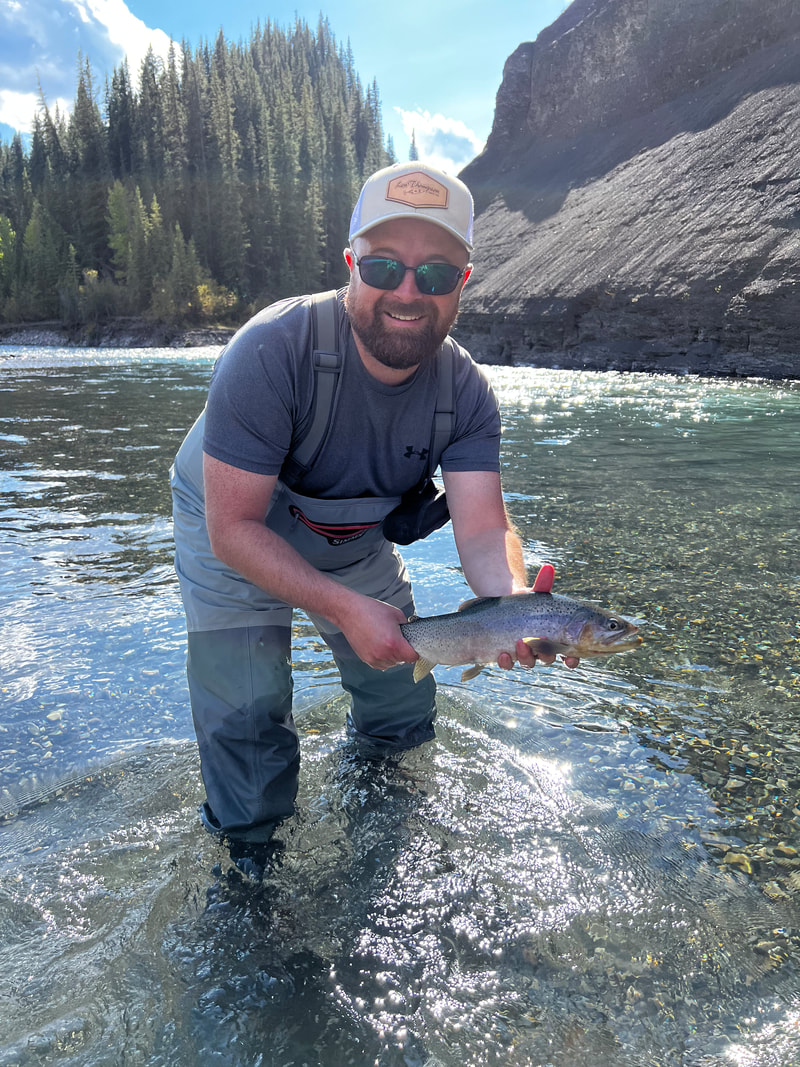
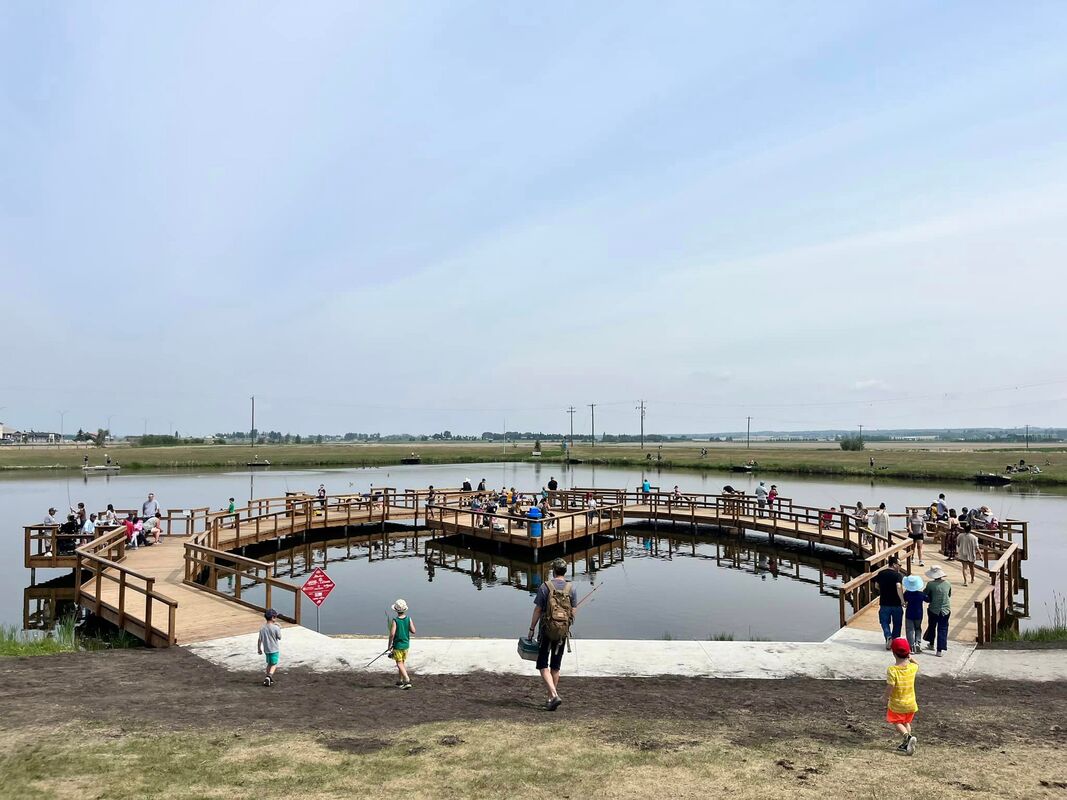
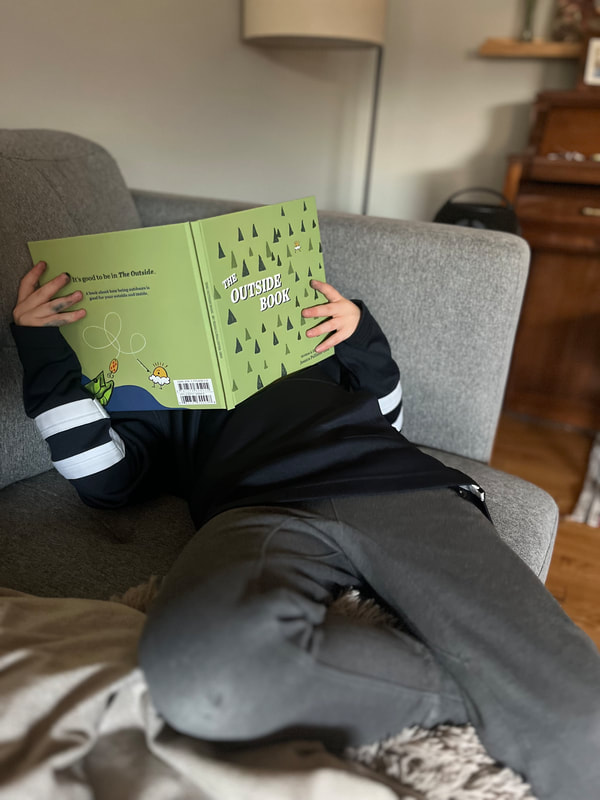
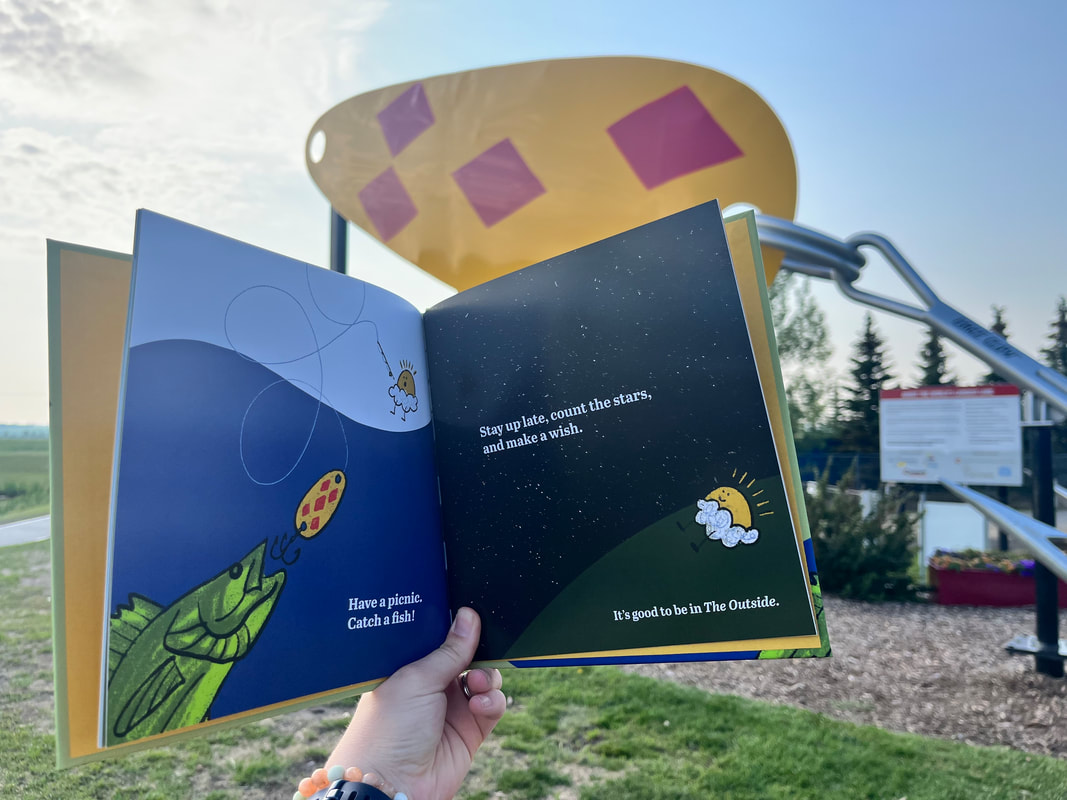
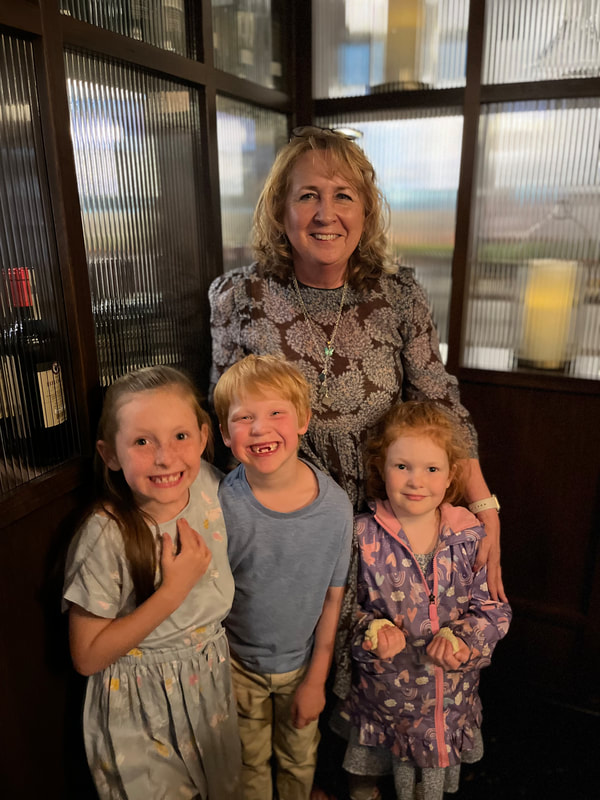

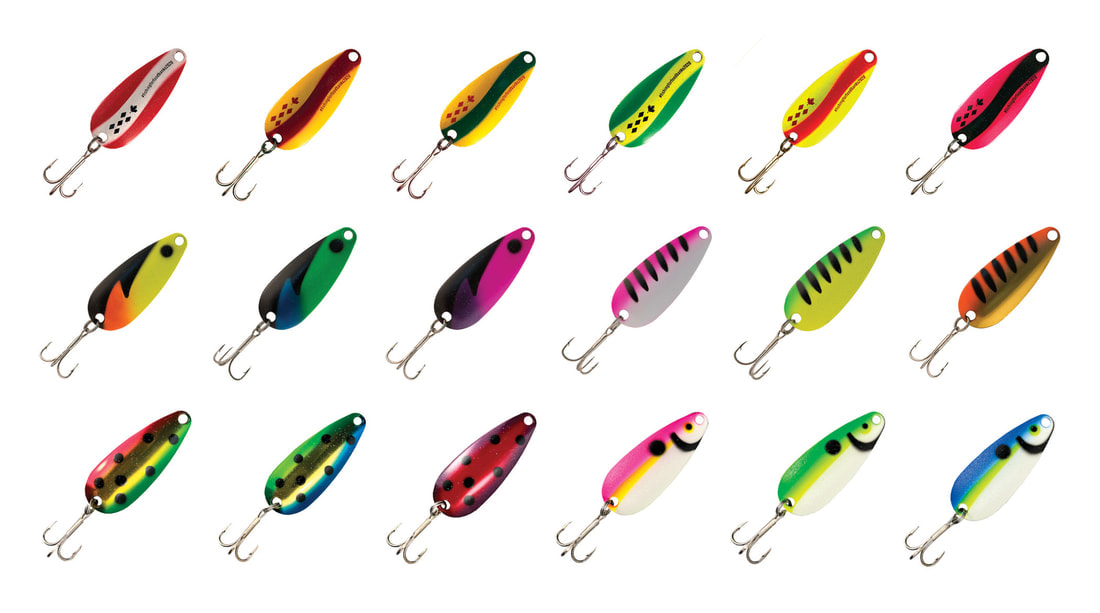
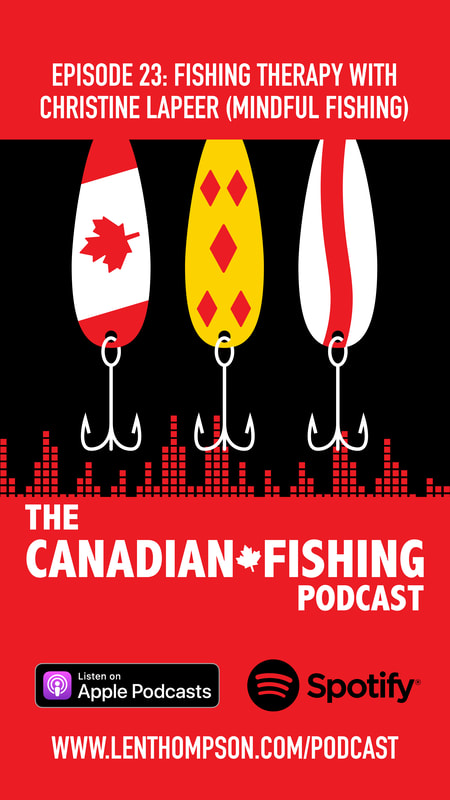

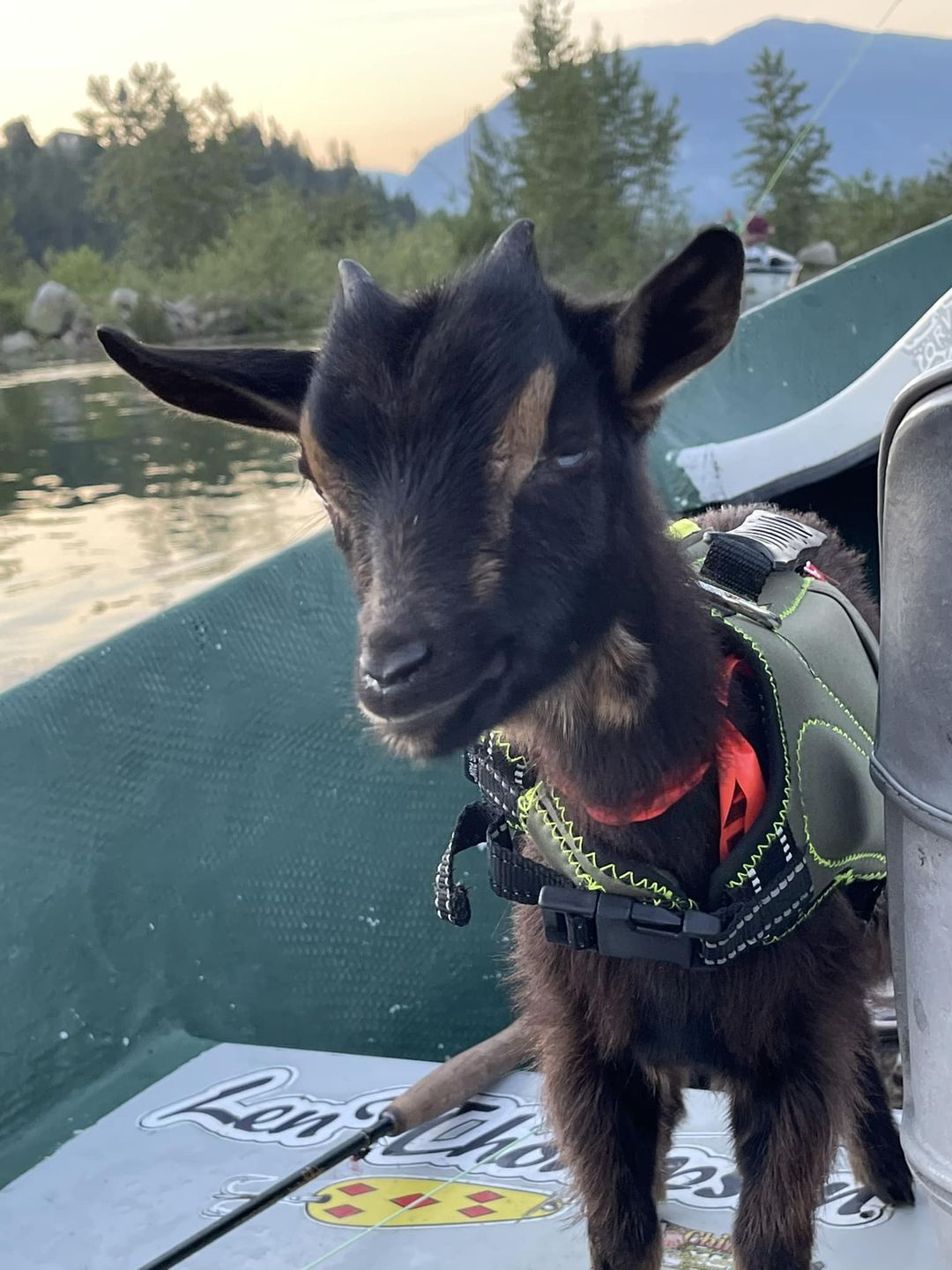
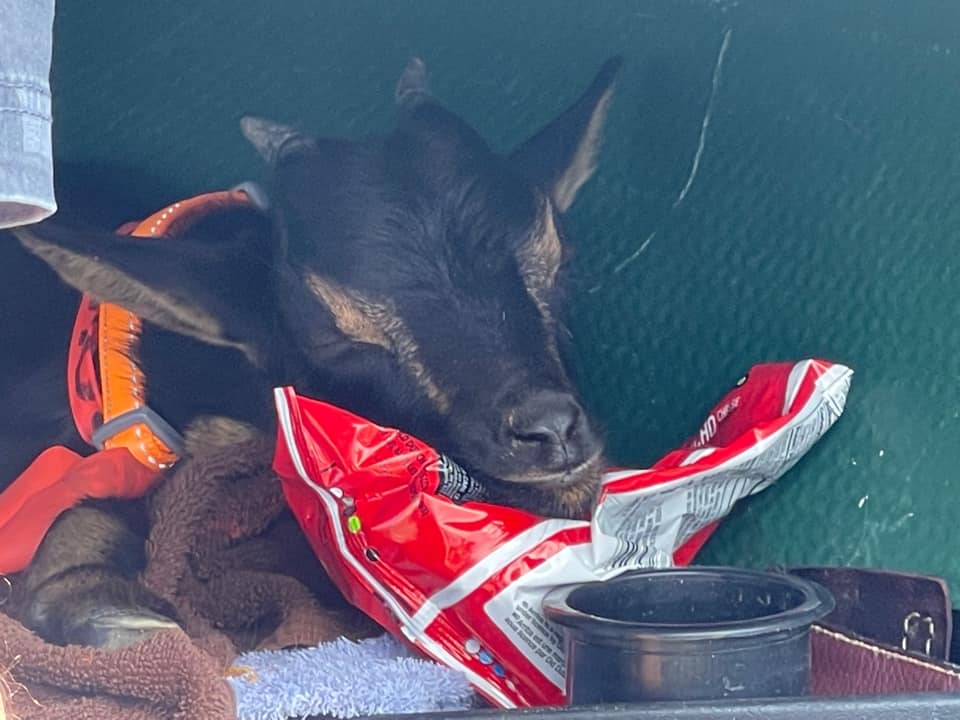
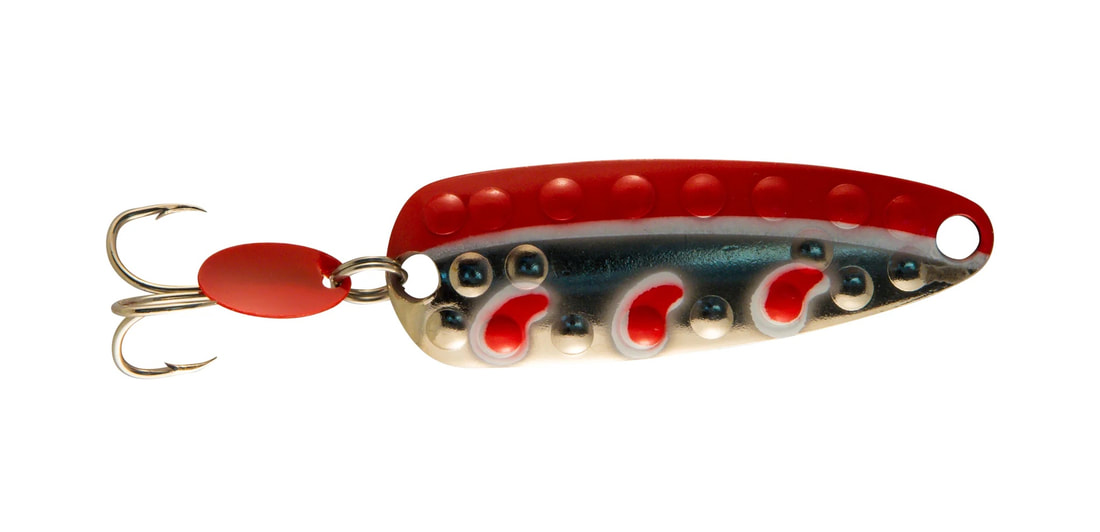
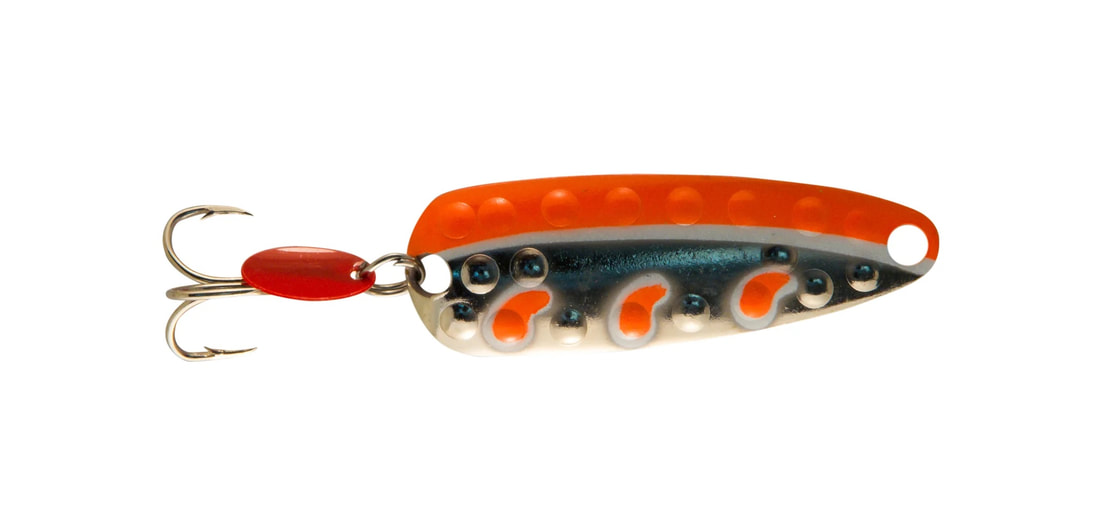
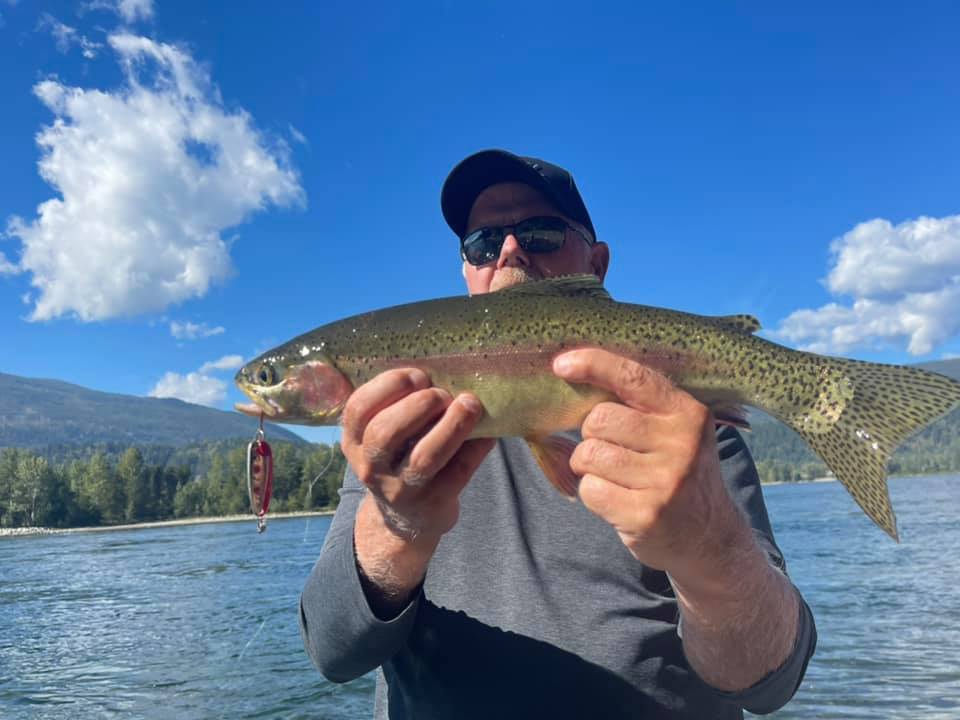
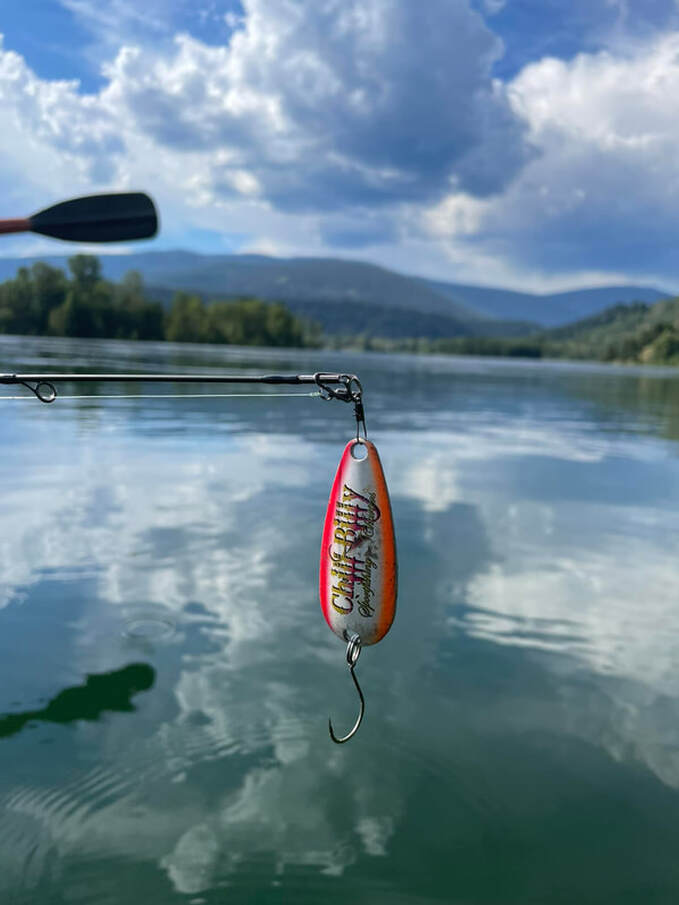
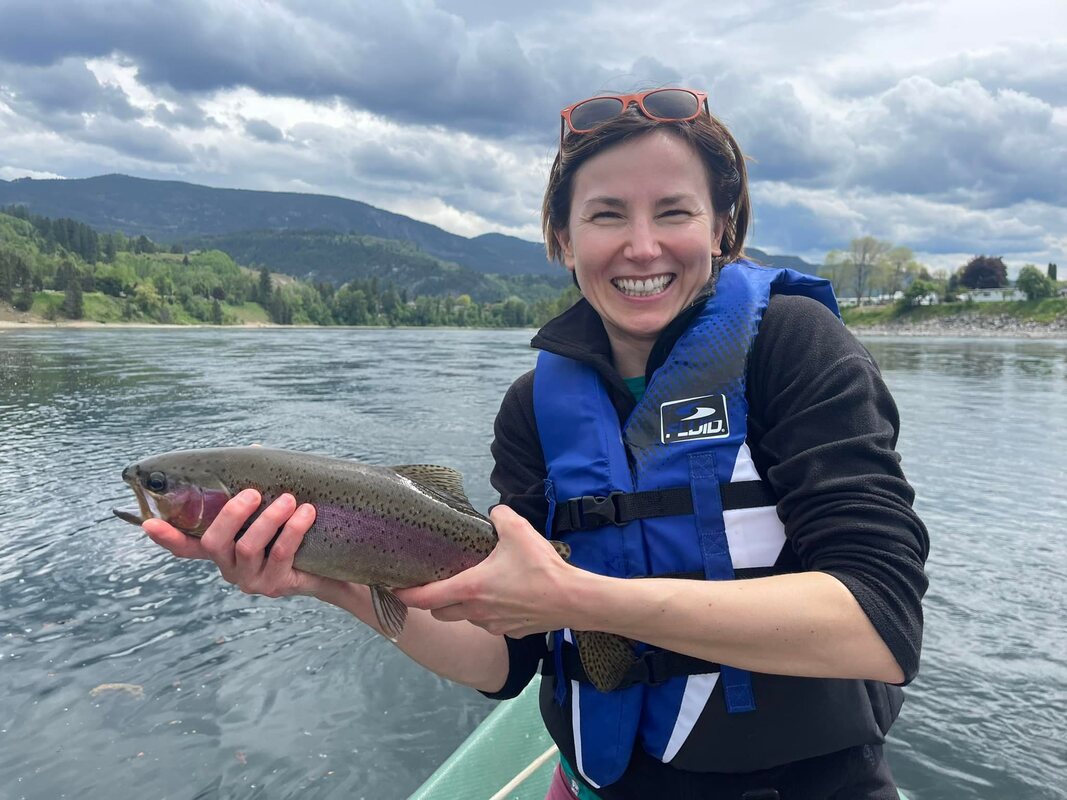
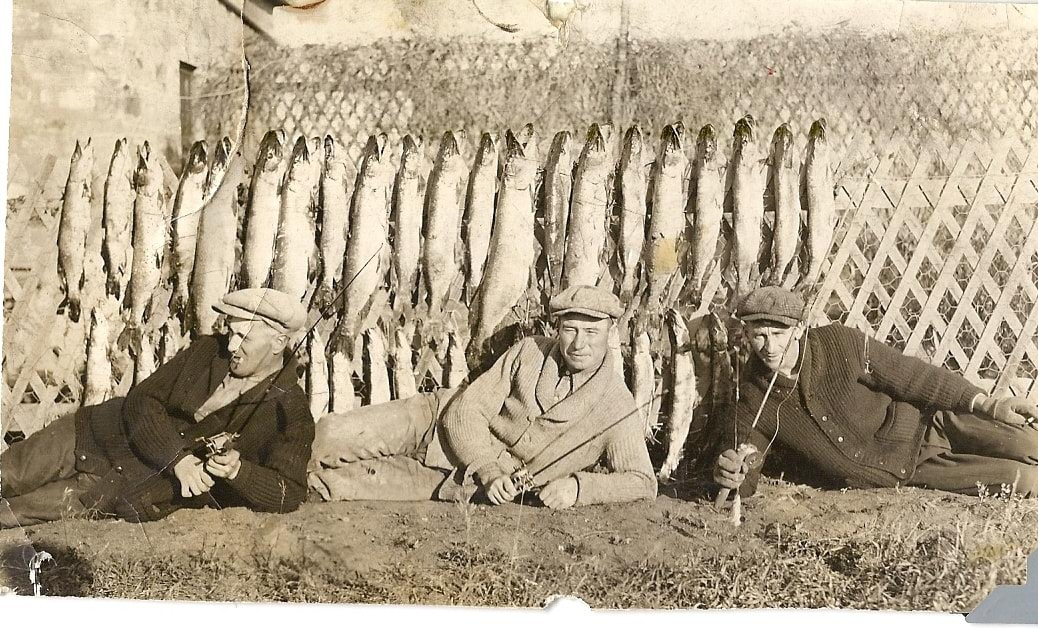
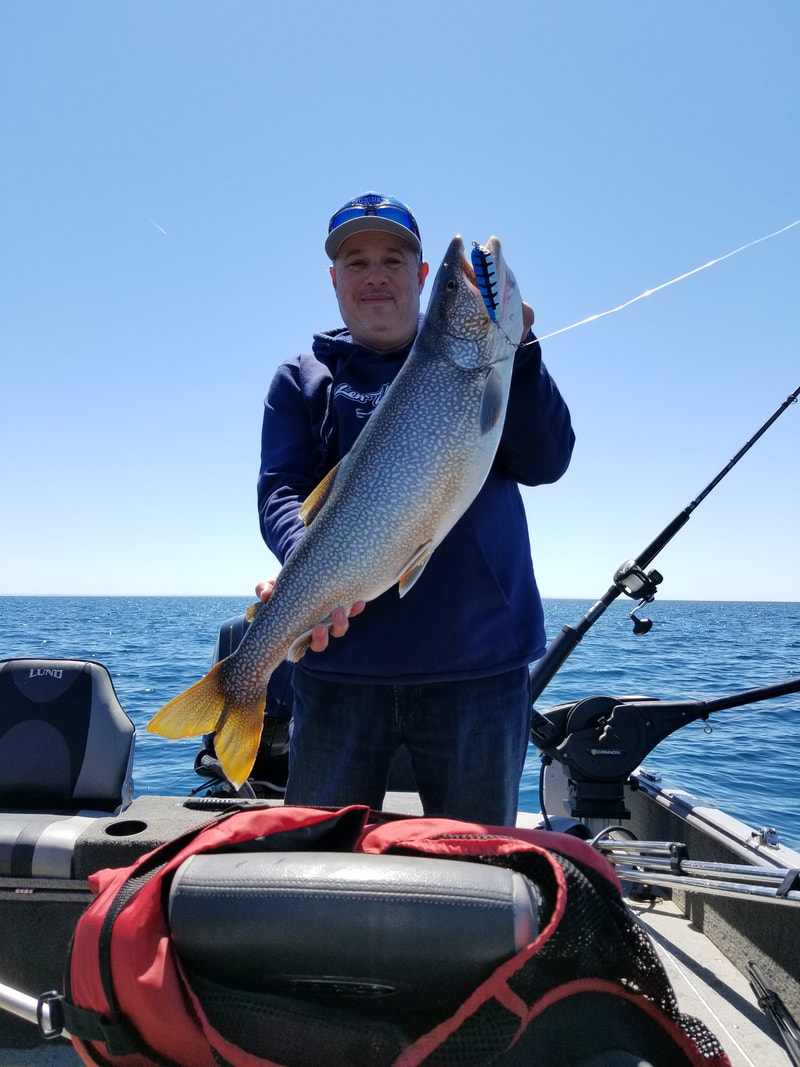
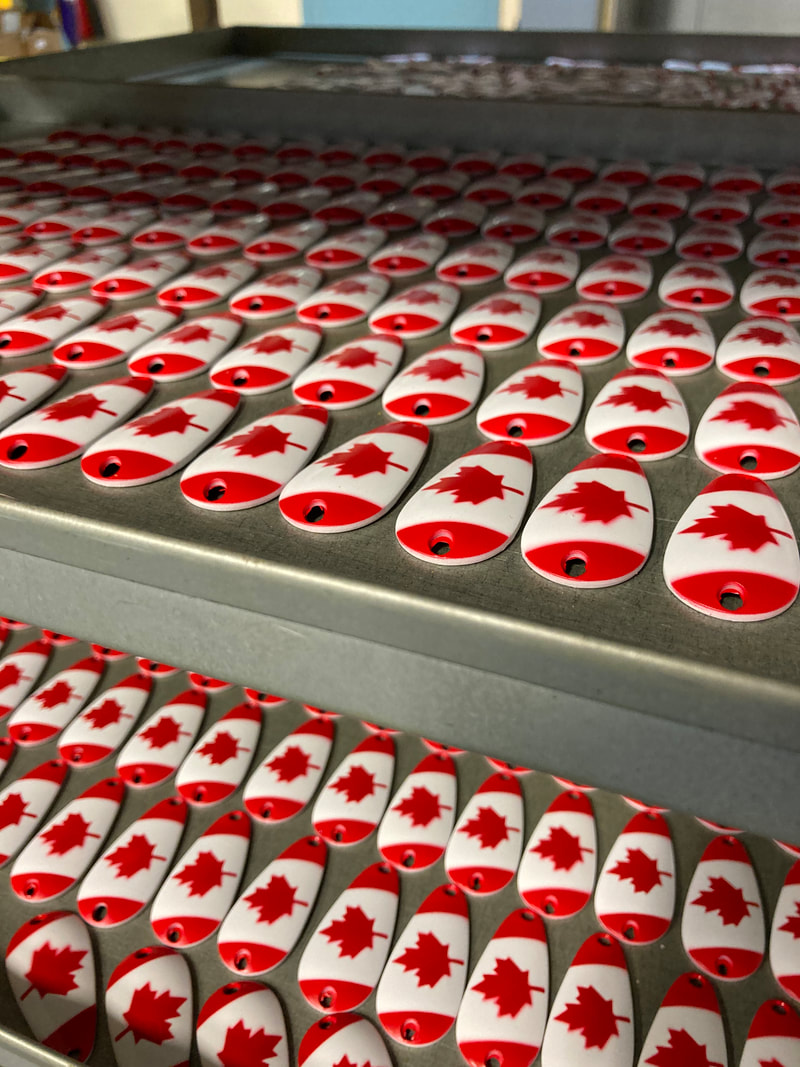
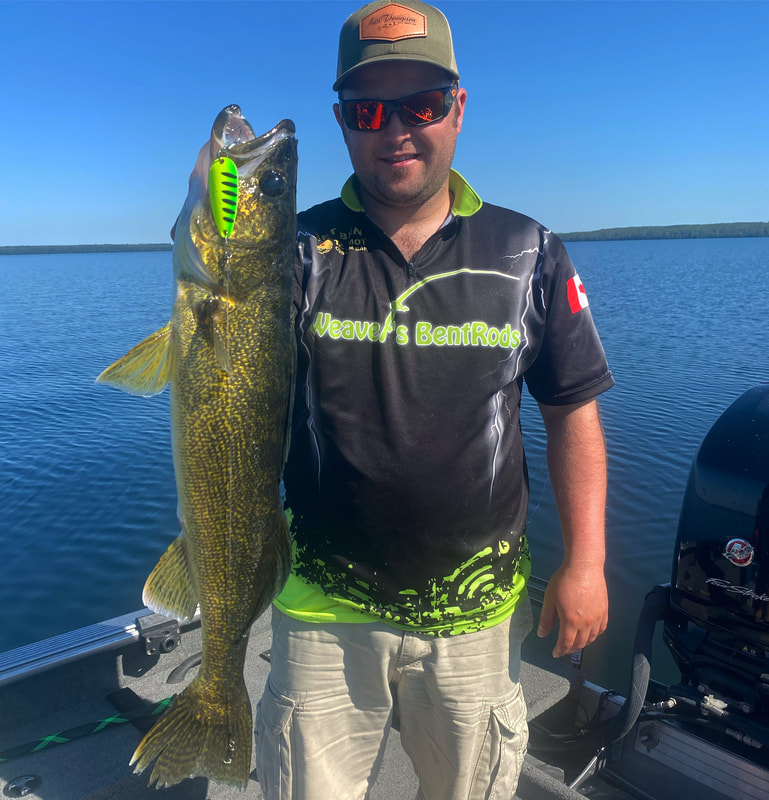

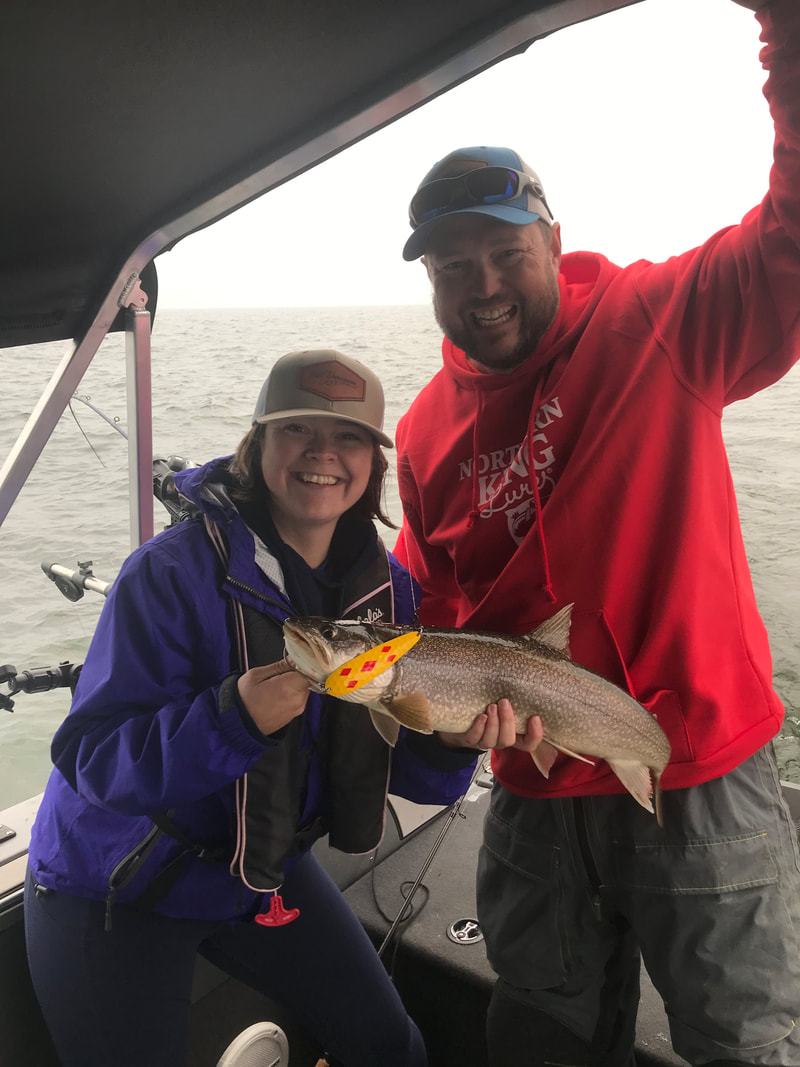
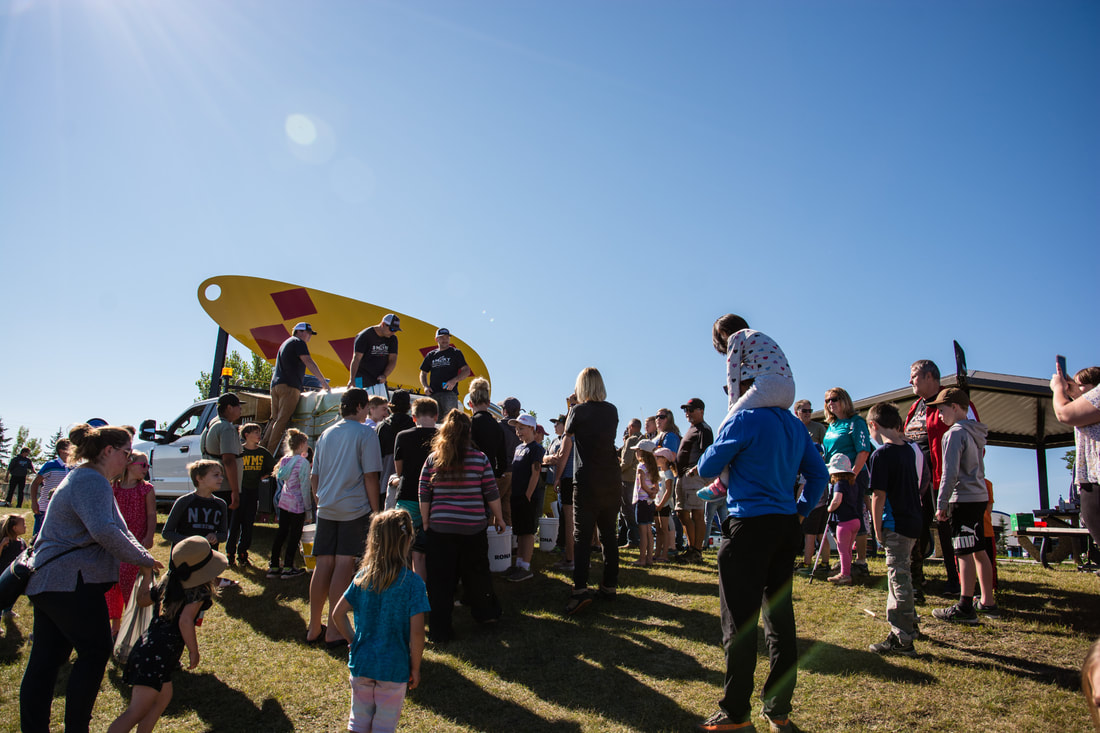
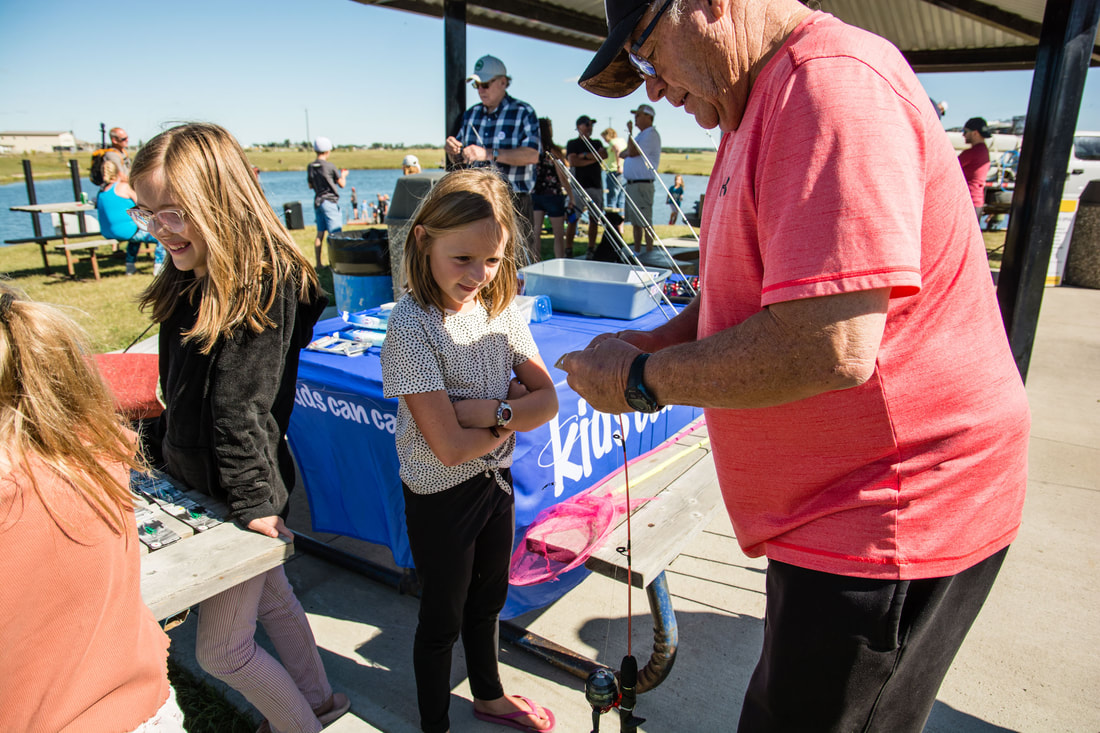
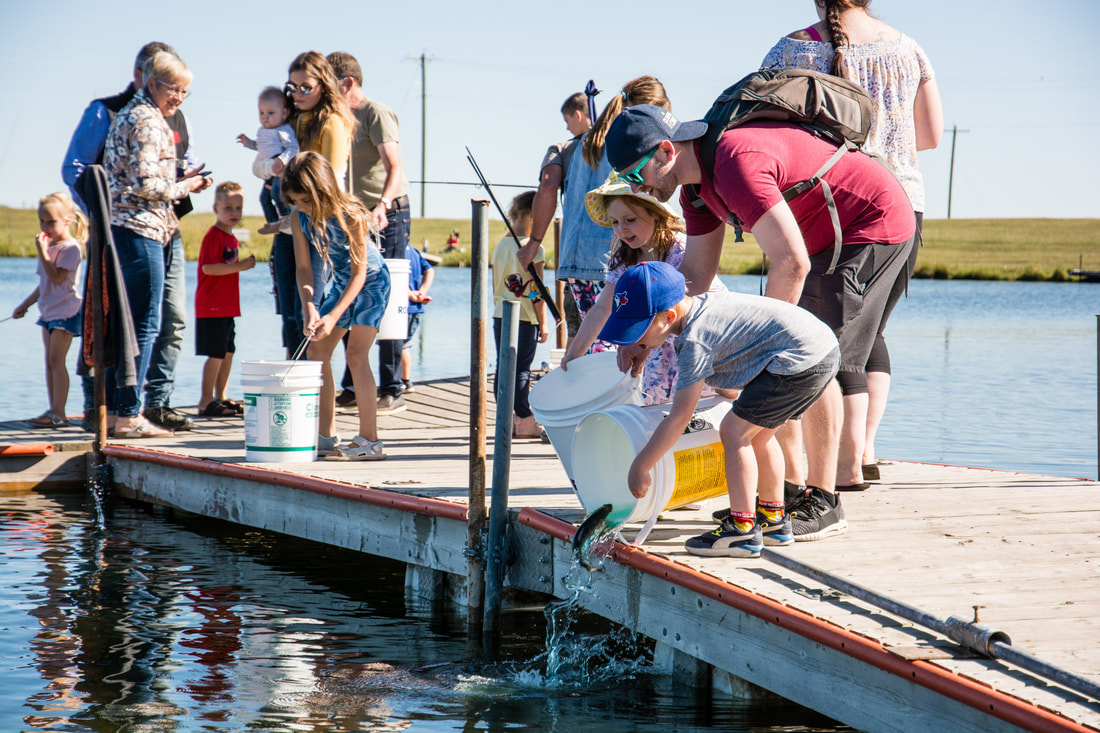
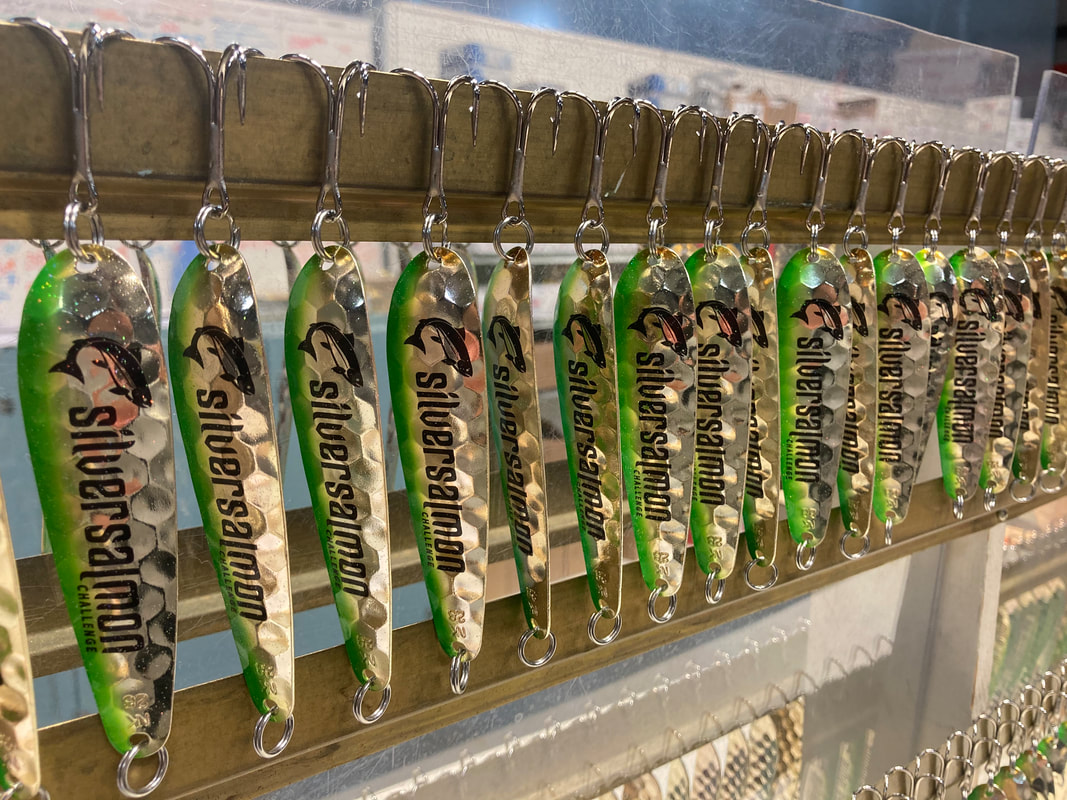
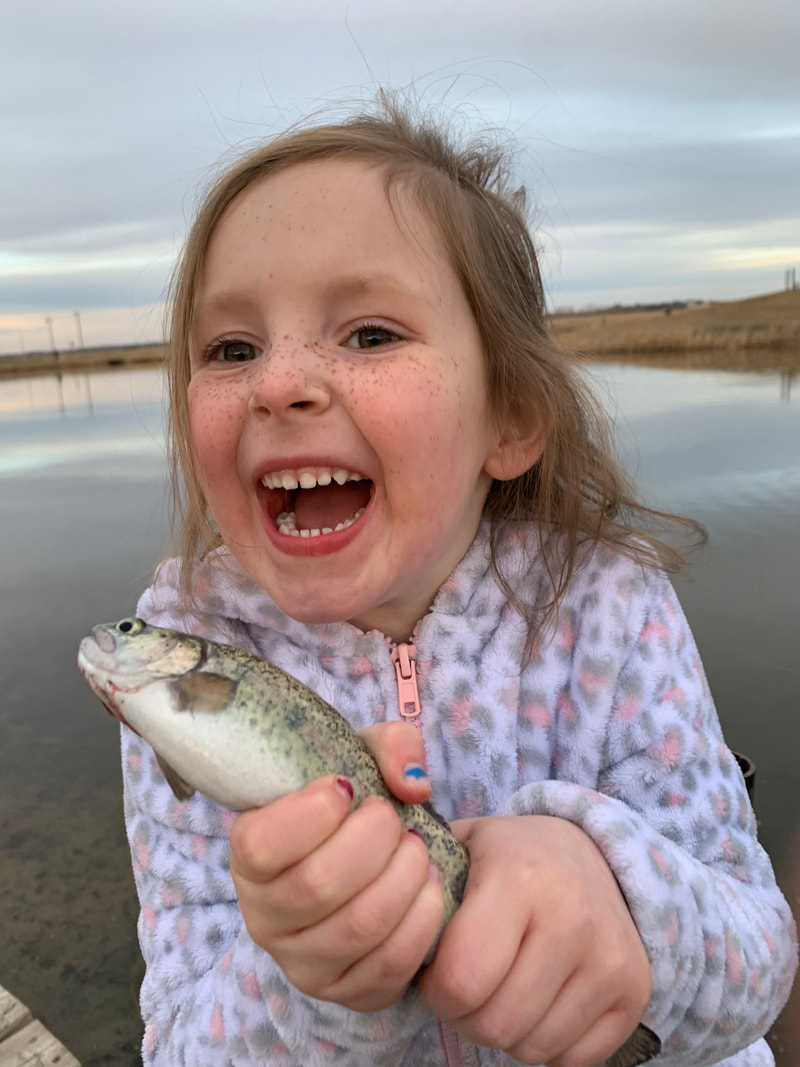
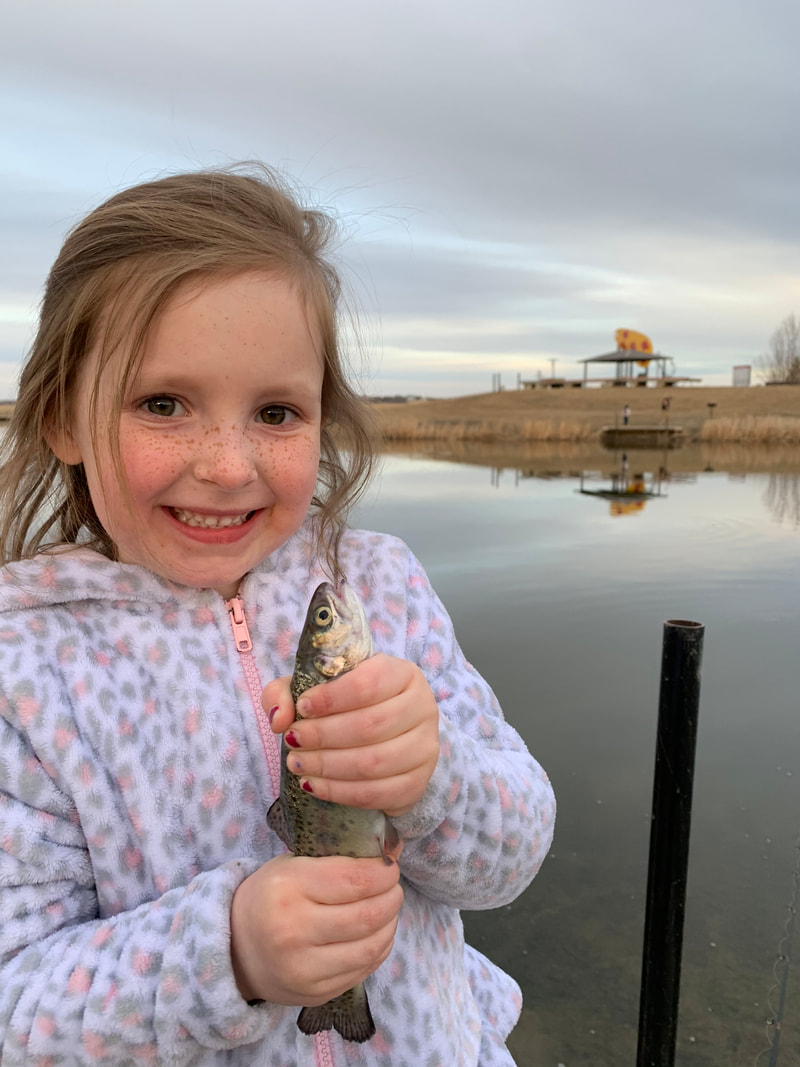

 RSS Feed
RSS Feed
